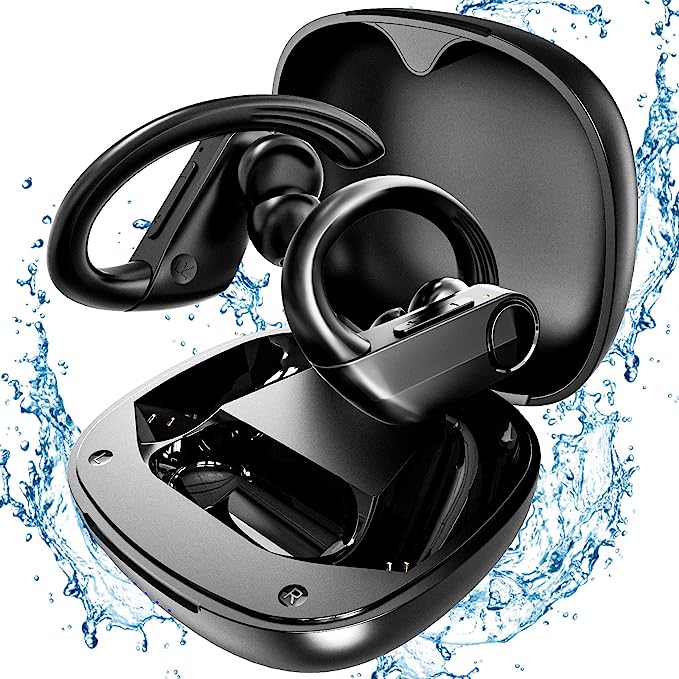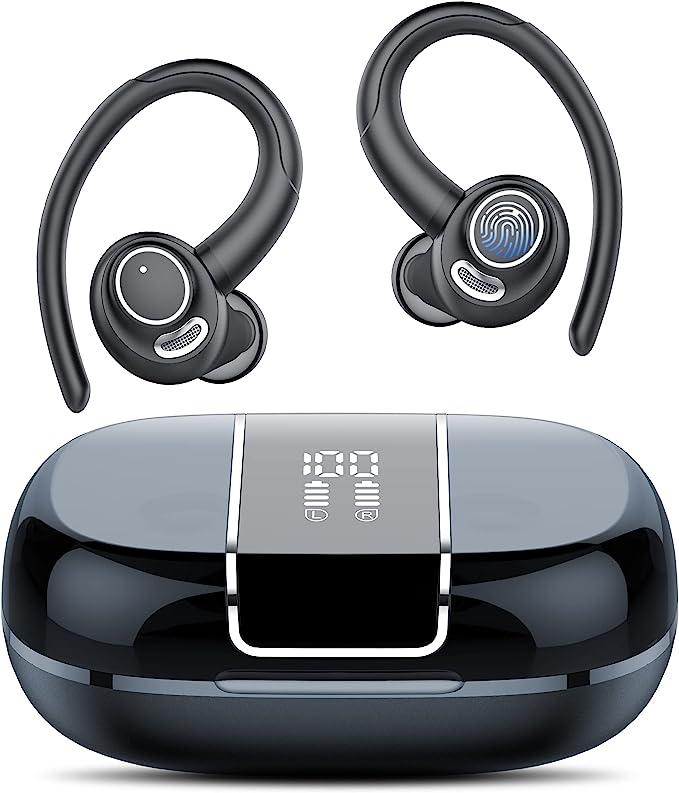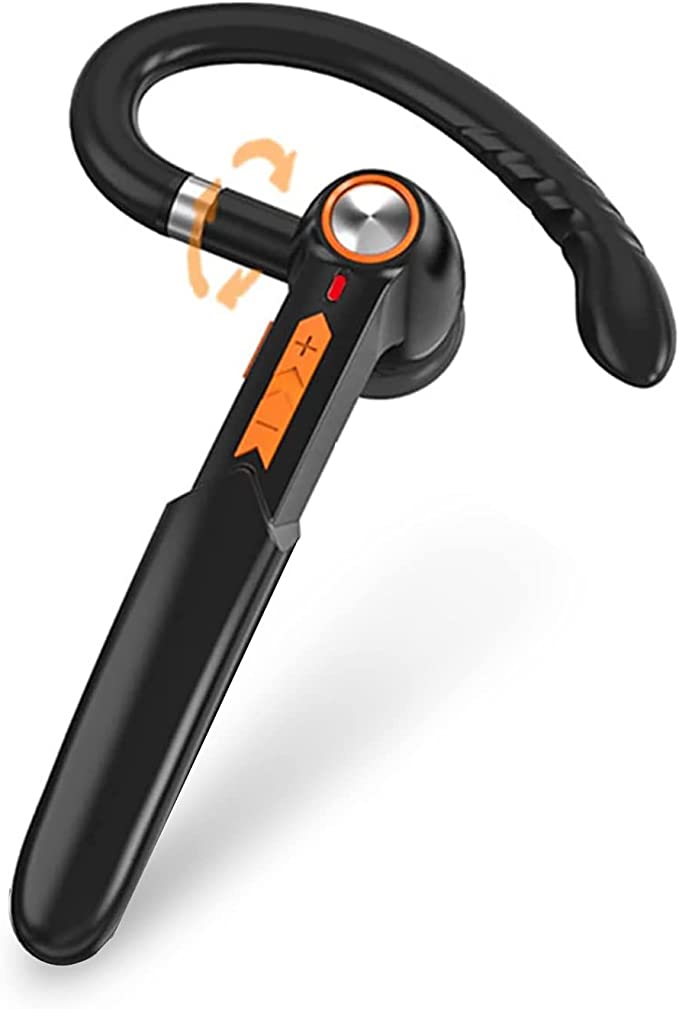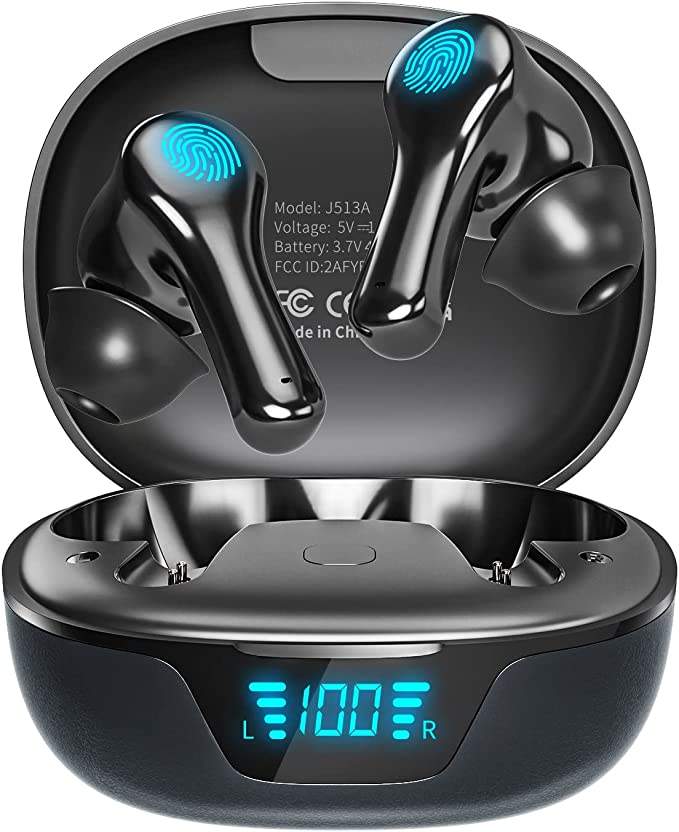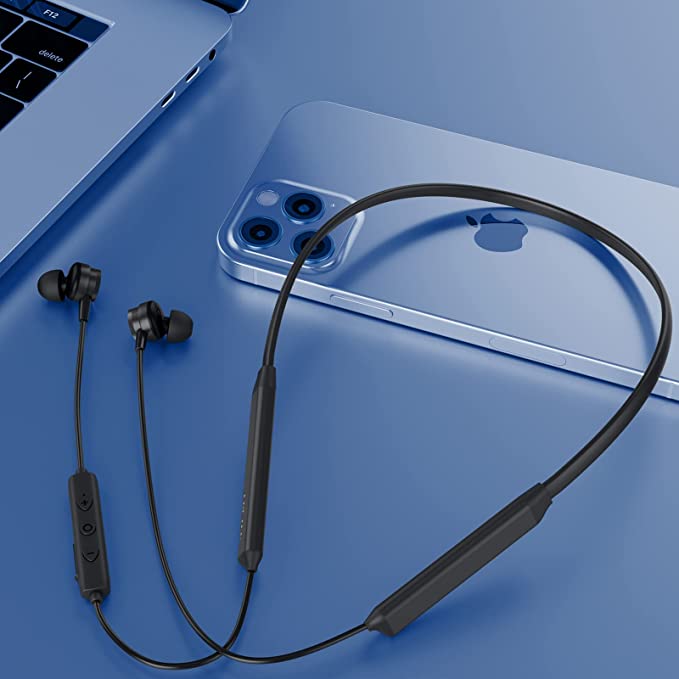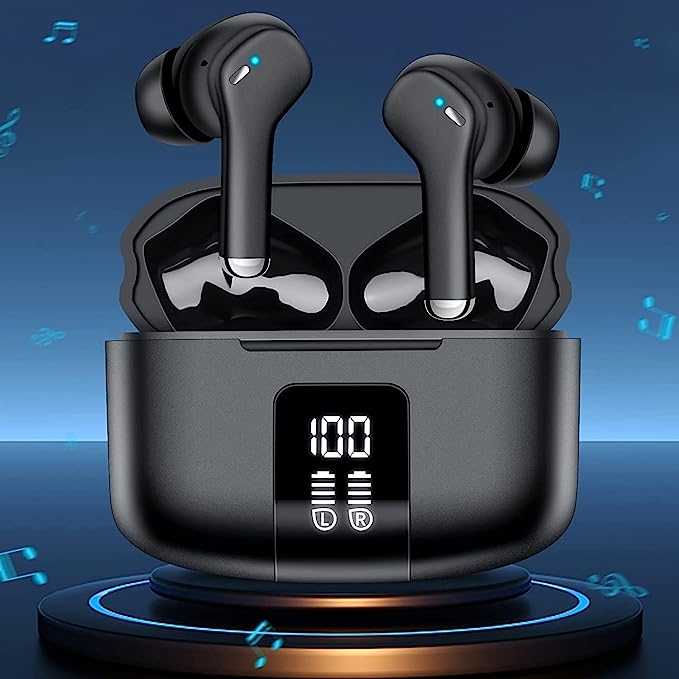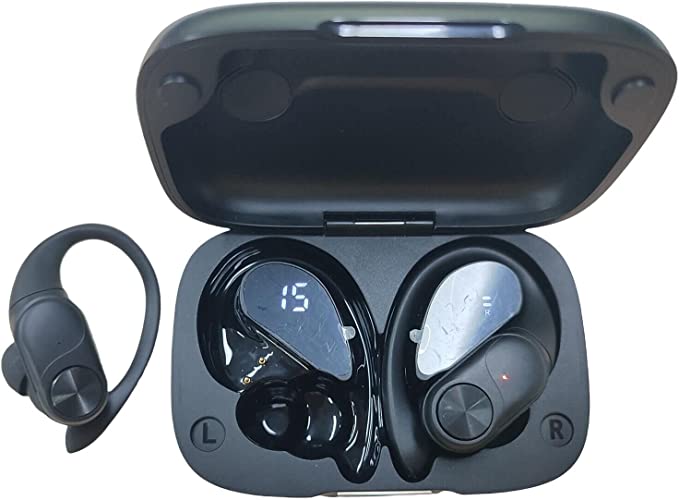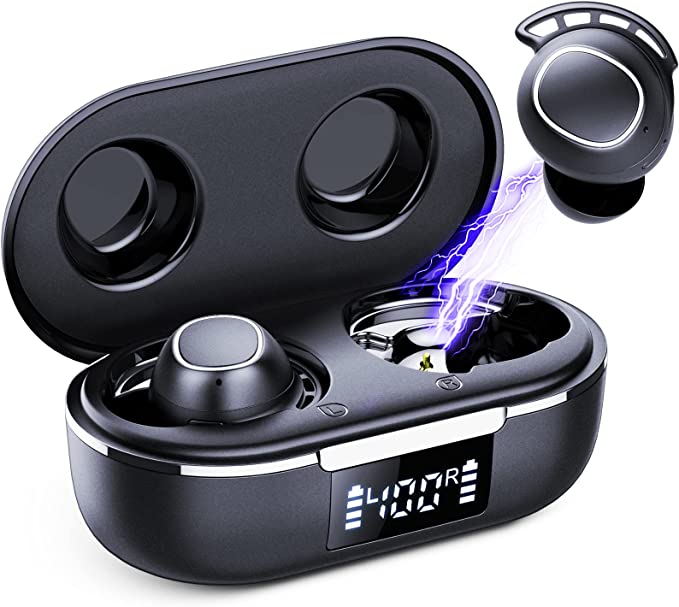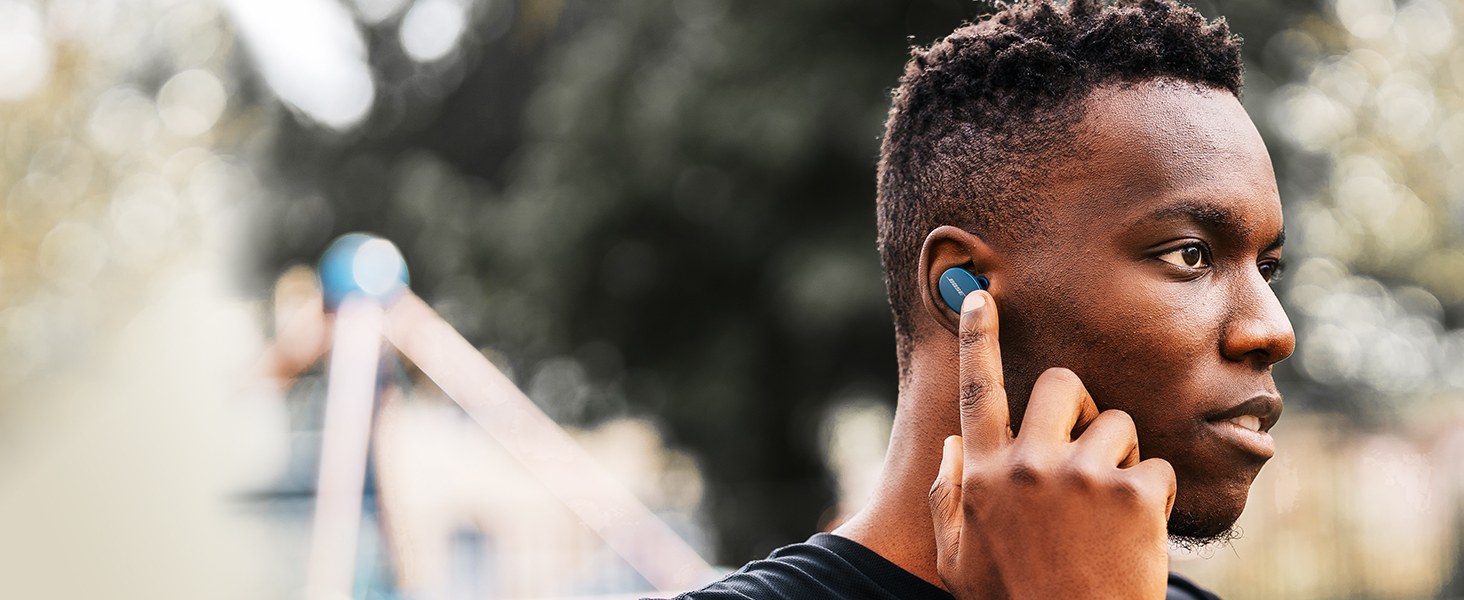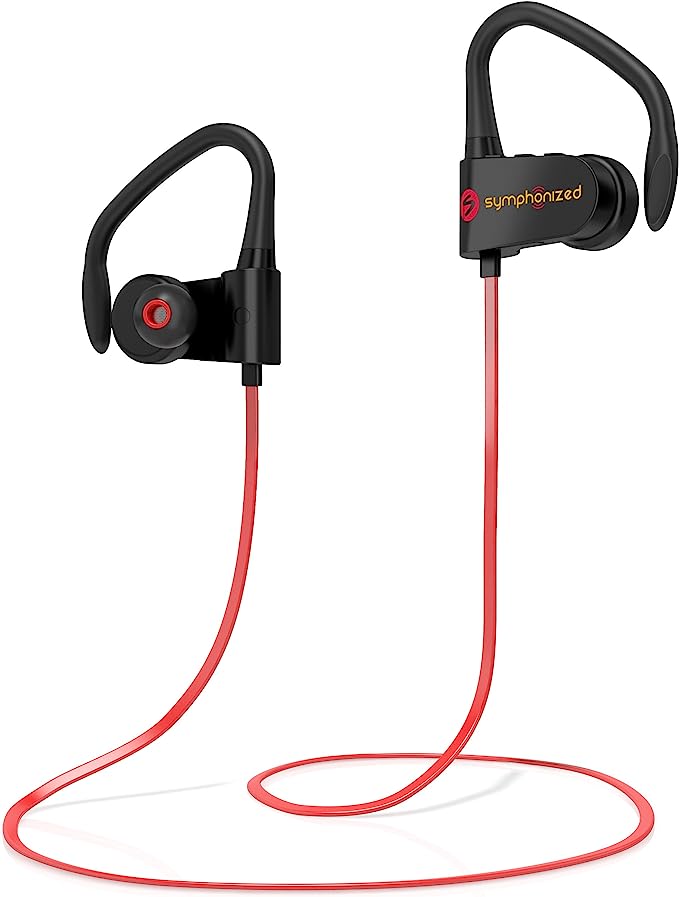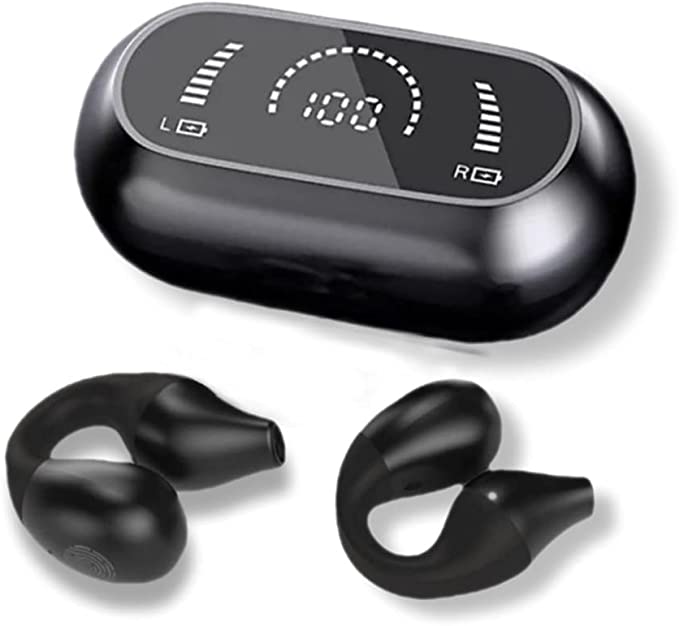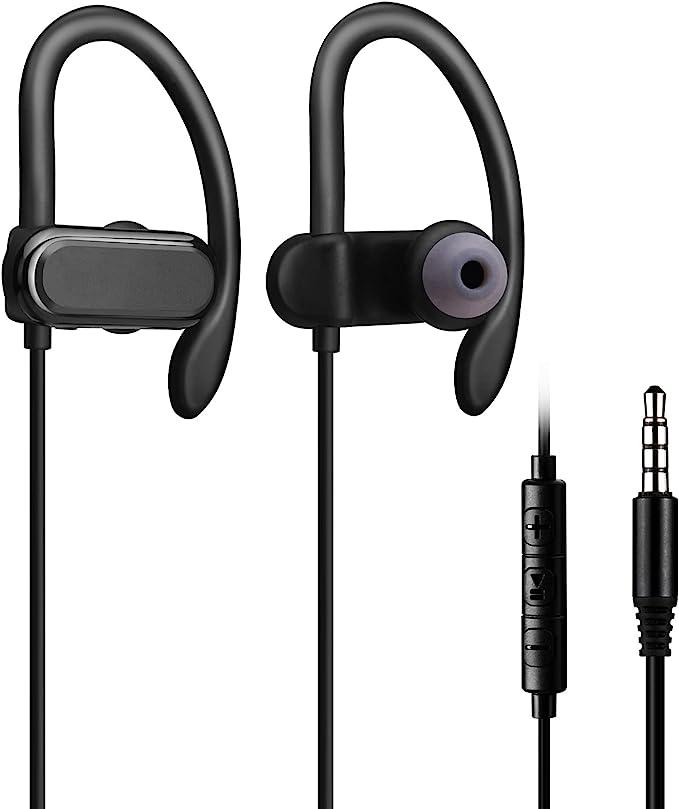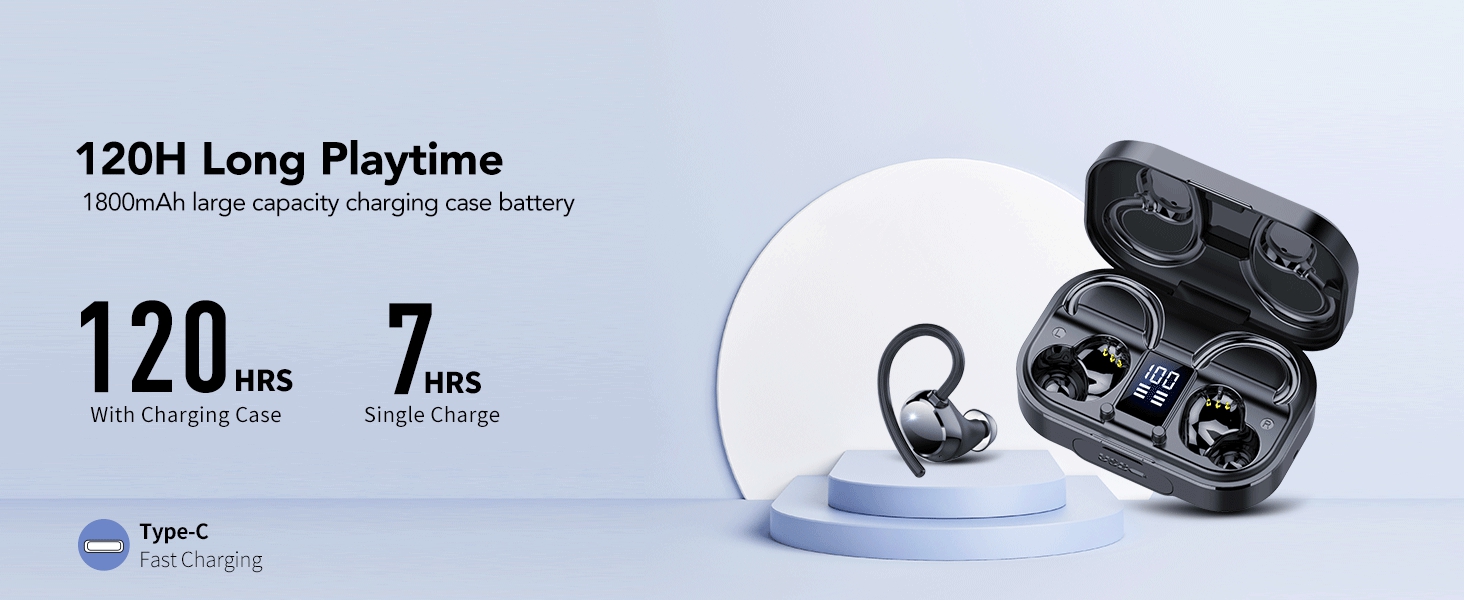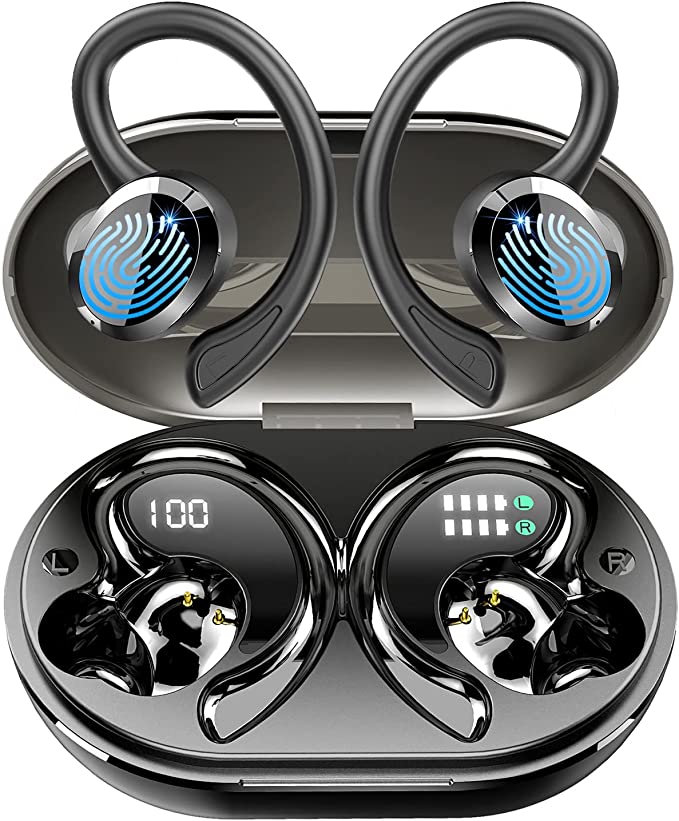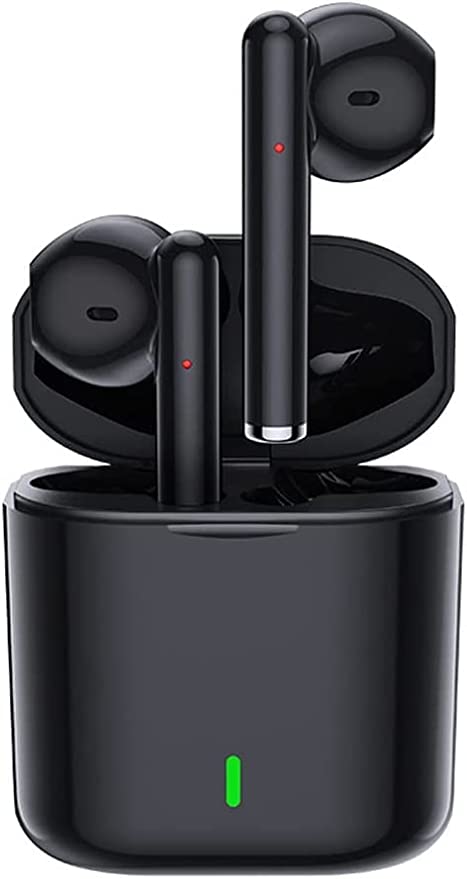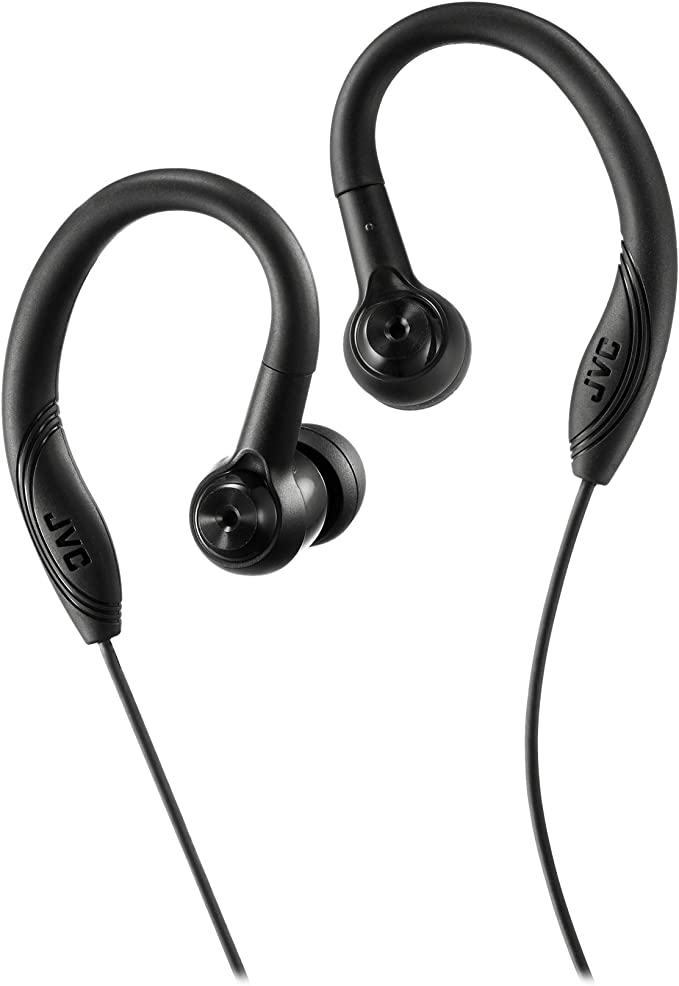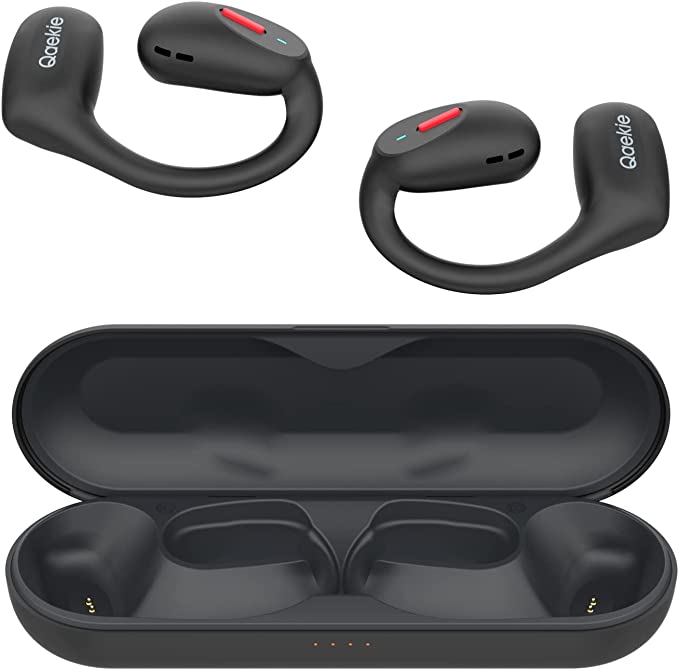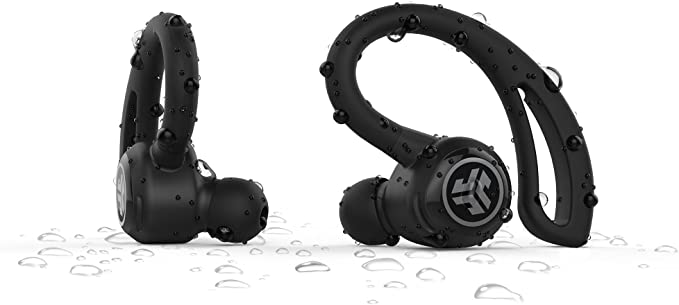Beyond the Beats: The Science of Your HAPPYAUDIO S3 Sport Earbuds – An In-Depth Look
Update on June 26, 2025, 2:43 p.m.
The call of the wild, the rhythm of the road, the clang of iron in the gym – for many of us, a motivating soundtrack isn’t just a pleasantry during physical exertion; it’s a vital force, a pacer, a mental fortress. Yet, the path to audio-enhanced athleticism is often paved with frustration. Picture this: you’re hitting your stride, endorphins surging, only to have an earbud skitter away like a startled beetle. Or perhaps you’ve faced the silent, creeping demise of your beloved audio gear, a victim of relentless sweat. And let’s not even start on those garbled, “Can you hear me now?!” calls that shatter your focus. It begs the question: can technology truly transform these tiny audio companions from a workout nuisance into a seamless, almost invisible, performance partner? With the HAPPYAUDIO S3 Earhook Headphones, we have a compelling case study to explore just that, diving deep into the science that makes them tick.

Act I: The Unshakeable Grip – Engineering Stability Against Motion’s Fury
First, let’s tackle the elephant in the room – or rather, the earbud threatening to vacate your ear. Gravity, the G-forces of a sudden sprint, the constant jarring of a high-impact aerobics class; these are formidable foes for any in-ear device. The HAPPYAUDIO S3 deploys a two-pronged strategy: the prominent earhook design coupled with soft, conforming eartips. This isn’t just a random appendage; it’s a clever piece of biomechanical engineering.
Think of your outer ear, with its intricate landscape of ridges and valleys. The earhook gracefully leverages these natural contours, particularly the groove behind your auricle (the visible part of your ear) and the supportive structure of the concha (the “bowl” part). By distributing the earbud’s minimal weight over a larger area and creating multiple anchor points, the earhook dramatically increases stability. It’s less like precariously balancing a pebble and more like securely mooring a small boat. This design adheres to fundamental principles of ergonomics, aiming to work with your body, not against it.
Complementing the hook are the eartips, likely crafted from a pliable, skin-friendly silicone. This material isn’t chosen by chance. Silicone offers an excellent combination of comfort for prolonged wear and a high coefficient of friction when in contact with the skin. This “grippiness” helps form a secure seal within the ear canal. This seal serves a dual purpose: it mechanically helps keep the earbud in place, and acoustically, it’s crucial for good bass response and passive noise isolation, shutting out some of the distracting ambient sounds of your environment. The result? You’re free to leap, lunge, and sprint with the confidence that your soundtrack will stay precisely where it belongs.

Act II: The Impervious Shield – Decoding IPX6 and Conquering the Elements
Next up is the relentless assault of moisture. Perspiration, with its corrosive salts, is an electronic device’s arch-nemesis. Add an unexpected rain shower to your run, and you’ve got a recipe for disaster – unless your gear is built انتخابات. The HAPPYAUDIO S3 counters this threat with an IPX6 waterproof rating.
Now, “IP” ratings can seem like alphabet soup, but they’re part of a standardized system: IEC 60529, maintained by the International Electrotechnical Commission. “IP” simply stands for Ingress Protection. The first digit (or ‘X’ if not tested for it) rates protection against solid particles (like dust), and the second digit rates protection against liquids. For the S3, the ‘X’ means it hasn’t been specifically rated for dust ingress under this particular standard – though a well-sealed device for water often offers decent dust protection incidentally. The crucial number here is ‘6’. An IPX6 rating signifies that the enclosure can withstand powerful water jets projected from any direction. Imagine a garden hose nozzle at full blast for at least three minutes; that’s the kind of rigorous test these earbuds (or at least their casings) are designed to pass. This is significantly more robust than a mere “sweat-resistant” claim.
How is this achieved? It’s a symphony of meticulous engineering. It involves precision-molded casings that fit together with minimal gaps, the use of rubberized gaskets or O-rings at vulnerable points like button openings or charging port covers (if not entirely sealed for wireless charging), and potentially the application of hydrophobic (water-repelling) nano-coatings on internal components. These create a formidable barrier, ensuring that whether you’re sweating buckets in a spin class or caught in a cloudburst, the delicate electronics within remain dry and functional.

Act III: The Unbroken Stream – The Subtleties of Bluetooth 5.3 Connectivity
What good is a secure, waterproof earbud if the audio stutters like a nervous speaker? A stable, reliable wireless connection is paramount. The HAPPYAUDIO S3 leverages Bluetooth 5.3 technology, the latest iteration in a long line of wireless communication protocols.
Bluetooth, charmingly named after Harald “Bluetooth” Gormsson, a 10th-century Danish king famed for uniting disparate Danish tribes (just as Bluetooth unites disparate electronic devices!), has come a long way. It operates in the busy 2.4 GHz Industrial, Scientific, and Medical (ISM) radio band, a slice of the radio spectrum also populated by Wi-Fi routers, microwave ovens, and a plethora of other wireless gadgets. This is where the advancements in Bluetooth 5.3 truly shine.
One key improvement lies in its enhanced Adaptive Frequency Hopping (AFH). Think of the 2.4 GHz band as a highway with many lanes. Older Bluetooth versions would hop between these lanes (frequencies) to avoid interference, but Bluetooth 5.3 is much smarter about it. It can more accurately classify channels as “good” or “bad” (i.e., congested or clear) and spend more time on the good ones, making for a significantly more robust and skip-free audio stream. It’s like having an advanced GPS that reroutes you in real-time to avoid traffic jams, ensuring your music or podcast flows uninterrupted.
Furthermore, Bluetooth 5.2 and subsequent versions (like 5.3) lay the critical groundwork for LE Audio. While the full suite of LE Audio features (like Auracast™ broadcast audio or significantly improved audio quality via the LC3 codec at lower data rates) requires support from both the transmitting device (your phone or watch) and the receiving device (the S3), the underlying architectural improvements contribute to better power efficiency. This means your S3 earbuds can eke out more playtime from their tiny batteries. You also generally benefit from reduced latency with newer Bluetooth versions – the delay between the signal being sent and you hearing it. This is particularly noticeable and beneficial if you use your earbuds for watching videos or playing games, ensuring the audio and visuals are perfectly synchronized.

Act IV: The Voice That Cuts Through – The Intelligence of ENC Microphones
There’s nothing quite like the frustration of trying to hold a conversation while on the move, only to have your caller complain they can only hear the cacophony around you. The HAPPYAUDIO S3 addresses this with an Environmental Noise Cancellation (ENC) microphone system.
It’s vital to distinguish ENC from its more famous cousin, Active Noise Cancellation (ANC). ANC is for your ears; it creates an “anti-noise” wave to cancel out ambient sounds so you can hear your music or silence more clearly. ENC, however, is for your caller’s ears; its mission is to ensure your voice is transmitted clearly, free from the interference of your surroundings.
How does this digital wizardry work? ENC typically relies on sophisticated Digital Signal Processing (DSP). While the exact implementation in the S3 isn’t detailed, common ENC strategies involve:
1. Microphone Placement/Arrays: Some advanced systems use multiple microphones. One might be positioned to optimally capture your voice, while others are situated to pick up the ambient noise.
2. Voice Activity Detection & Noise Profiling: The DSP analyzes the incoming audio signals. It’s trained, in a sense, to recognize the acoustic “fingerprint” of human speech versus common environmental sounds like wind, traffic, keyboard clicks, or the general hubbub of a café.
3. Adaptive Filtering: Once the noise is identified, the DSP applies algorithms to suppress or filter out these unwanted sounds from the signal that carries your voice. It’s like having a tiny, incredibly fast sound engineer meticulously cleaning up your audio before it’s sent over the airwaves.
The result is that even if you’re power-walking down a busy street or catching up on calls between sets at a noisy gym, the person on the other end experiences your voice with significantly improved clarity, as if you were in a much quieter space.
Act V: The Enduring Rhythm – Mastering Battery Life and Charging
For any truly wireless device, especially one accompanying you on long runs or through multiple workout sessions, battery life is king. The fear of the dreaded low-battery beep mid-activity is real. The S3 boasts a claimed 7 hours of playtime from the earbuds themselves, with the charging case providing an additional 49 hours, culminating in a substantial 56 hours of total listening time.
This impressive stamina is largely thanks to modern Lithium Polymer (Li-Po) batteries. These are the unsung heroes of portable electronics. Unlike the bulky cylindrical cells of yesteryear, Li-Po batteries can be made very thin and in various shapes, making them ideal for cramming into the compact form factor of earbuds and their cases. More importantly, they offer a high energy density, meaning they pack a lot of power relative to their size and weight.
The charging case is more than just a protective shell; it’s a pocket-sized power plant. It houses its own, larger Li-Po battery, ready to replenish the earbuds multiple times. Each time you nestle the S3 earbuds back into their case, they begin to recharge, ensuring they’re topped up for your next adventure.
When it’s time to refuel the case itself, the S3 offers dual conveniences: advanced wireless charging technology and a standard USB-C port. Wireless charging, likely adhering to the common Qi (pronounced “chee”) standard, employs the principle of electromagnetic induction. Coils within a compatible charging pad create an alternating magnetic field. When the S3’s case (which also contains a coil) is placed on this pad, the magnetic field induces an electrical current in the case’s coil, thereby charging its battery. It’s like an invisible energy handshake, no fumbling with cables required – the S3’s product page mentions a full charge for the case takes about 2 hours this way. The inclusion of USB-C, the modern, reversible, and often faster-charging wired standard, provides a reliable and ubiquitous alternative. For many users, 56 hours of total playtime could easily translate to a week or more of typical workout usage without needing to plug the case into a wall.
Act VI: The Reassuring Click – The Underrated Virtue of Physical Buttons
In a world increasingly dominated by sleek, touch-sensitive surfaces, the HAPPYAUDIO S3 makes a deliberate choice with its physical button controls. This might seem like a throwback to some, but in the context of sports and active use, it’s a decision rooted in pragmatic human factors engineering.
The core advantage is unambiguous tactile feedback. When you press a physical button, you feel a distinct click, a haptic confirmation that your command—be it adjusting volume, skipping a track, or answering a call—has been registered. This is invaluable when your visual attention is, and should be, focused on your surroundings or your athletic form, not on trying to precisely tap a tiny, featureless surface.
Consider the realities of a strenuous workout: * Sweaty Fingers: Touchscreens can become erratic or unresponsive when moisture is introduced. Physical buttons are generally unfazed. * Gloves: In colder climates, if you’re wearing gloves, operating touch controls can be a frustrating, if not impossible, affair. Physical buttons remain accessible. * Reduced Cognitive Load: During intense physical activity, your brain is already managing a lot. Simple, distinct button presses for common controls can require less conscious thought and precision than multi-tap gestures or swipes on a touch surface, helping you stay in the zone. While touch controls offer a clean aesthetic, the S3 prioritizes functional reliability where it arguably matters most.
Coda: The Deep Resonance – A Note on “Deep Bass”
The S3 product description tantalizes with the promise of “Deep Bass Sound.” While the perception of audio quality, especially bass, is wonderfully subjective and influenced by everything from our individual hearing aural to our musical tastes, the ability to reproduce low-frequency sounds effectively is grounded in physics.
“Deep bass” typically refers to the impactful reproduction of sound waves in the lower end of the audible human spectrum, roughly from 20 Hz (the rumble you feel more than hear) up to around 250 Hz. In earbuds like the S3, this is primarily the job of the dynamic drivers – tiny speakers comprising a diaphragm, a voice coil, and a magnet. * Driver Size and Excursion: Generally, a larger diaphragm can move a greater volume of air, which is beneficial for producing those longer, lower-frequency sound waves. While the S3’s specific driver size isn’t listed in the provided Amazon data (though its S1 sibling was mentioned in a review as having 12mm drivers, a decent size for earbuds), it’s not just about size. The diaphragm’s material, its ability to move back and forth accurately (excursion), and the power of the magnet all play crucial roles. * Acoustic Enclosure and Seal: The internal design of the earbud housing itself acts as an acoustic chamber. Critically, the seal created by the eartip in your ear canal is paramount for bass. If this seal is poor, bass frequencies, which have longer wavelengths, tend to “leak” out, resulting in a thin, tinny sound. A good seal traps these frequencies, allowing them to build pressure and be perceived more fully.
Ultimately, the goal of “deep bass” in a sport earbud is to provide a rhythmic, motivating foundation to your music, adding a sense of power and immersion to your workout experience.
Finale: Technology in Stride – Your Enhanced Athletic Journey
The HAPPYAUDIO S3 Earhook Headphones, when dissected, reveal themselves to be more than just a conduit for sound. They are a compact tapestry woven from threads of biomechanics, materials science, wireless communication theory, acoustic engineering, and thoughtful human-computer interaction. Each feature, from the curve of the earhook to the algorithm managing Bluetooth connectivity, is a testament to how technology can be meticulously engineered to serve the demanding, dynamic environment of an active lifestyle.
By understanding the “why” behind these features – why an IPX6 rating matters beyond a marketing buzzword, or how ENC differs from ANC – we become more informed consumers and, perhaps, more appreciative users. The journey of sport audio technology is ever-evolving, constantly striving for a more seamless, more immersive, and more empowering experience. And as we push our own physical boundaries, it’s fascinating to see how these tiny technological companions are keeping pace, stride for stride.



